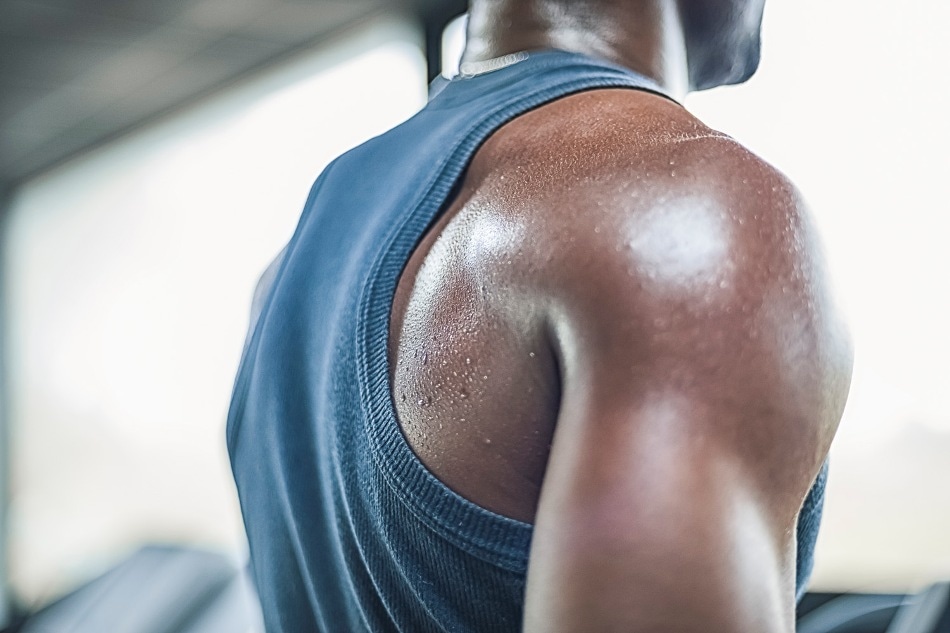Jul 27 2018
The hormone cortisol rises and falls naturally during the day and can shoot up in reaction to stress, but existing approaches for assessing cortisol levels require waiting for quite a few days for results to return from a lab. By the time a person gets to see the results of a cortisol test - which may inform treatment for specific medical illnesses - it is probably different from when the test was conducted.
 A new wearable biosensor, developed by the Salleo lab at Stanford, measures the amount of cortisol in a person’s sweat. Cortisol influences emotional stress, blood pressure, metabolism, immune response and memory formation, among other important functions. (Image credit: Getty Images)
A new wearable biosensor, developed by the Salleo lab at Stanford, measures the amount of cortisol in a person’s sweat. Cortisol influences emotional stress, blood pressure, metabolism, immune response and memory formation, among other important functions. (Image credit: Getty Images)
Now, a research team headed by materials scientist Alberto Salleo at Stanford University has developed a stretchy patch that, applied straight onto the skin, wicks up sweat, and measures how much cortisol a person is creating. A paper illustrating the wearable sensor has been published in the July 20th issue of Science Advances.
We are particularly interested in sweat sensing, because it offers noninvasive and continuous monitoring of various biomarkers for a range of physiological conditions. This offers a novel approach for the early detection of various diseases and evaluation of sports performance.
Onur Parlak, Post-Doctoral Scholar & Lead Author
Clinical tests that assess cortisol offer an objective gauge of physical or emotional stress in research subjects and can assist doctors in telling if a patient’s pituitary or adrenal gland is working well. If the prototype version of the wearable device becomes an actuality, it could permit people with an imbalance to screen their own levels at home.
A fast-working test like this could also expose the emotional state of young - even non-verbal - children, who might not otherwise be able to indicate that they feel stress.
The Cortisol Challenge
Parlak joined Salleo in this task of developing wearable technologies. While presenting Parlak’s work at a conference, someone proposed the idea of a sensor capable of measuring cortisol to Salleo. Cortisol poses a unique challenge to biosensors like the one Parlak was creating because these sensors detect a molecule’s negative or positive charge - and cortisol possesses no charge.
To handle this challenge, Parlak constructed his stretchy, rectangular sensor around a membrane that precisely binds to cortisol alone. Adhered to the skin, it sucks in sweat passively via holes in the bottom of the patch. The sweat pools in a reservoir, which is capped by the cortisol-sensitive membrane. Charged ions like potassium or sodium, also found in sweat, pass via the membrane unless they are obstructed by cortisol. It’s those backed up charged ions the sensor spots, not the cortisol itself. Above all of this is a waterproof layer that guards the patch against contamination.
I always get excited about a device, but the sweat collection system that Onur devised is really clever. Without any active microfluidics, he’s able to collect enough sweat to do the measurements.
Alberto Salleo, Materials Scientist
For a user to see cortisol levels, all he or she needs to do is sweat (enough to glisten), apply the patch, and connect it to a system for analysis, which delivers results within seconds. In the future, the scientists hope the sensor could be part of a completely integrated system.
Optimizing and Diversifying
Parlak first demonstrated that the device matched up to the gold standard clinical test in the lab, then gave it a real-world test. Along with two volunteers, Parlak ran for 20 minutes with the patches on their arms. In the lab as well as the real-world tests, the results were similar to the gold standard.
Thus far, the sensor seems to function as designed. But the scientists want to ensure it is more accurate and reliable, and also make sure it is reusable. The prototype appears to function numerous times so long as it is not drenched with sweat. In the future, they may use the cortisol sensor on saliva, which would then avoid patients having to sweat.
The scientists, eager to make the most of their generalizable design, are also keen to figure out what biomarker to study next. Ultimately, the goal would be to have a device that assesses several biomarkers simultaneously, which would give a clearer and more personalized picture of what is taking place in a person’s body.
Co-authors include Scott Keene and Andrew Marais of Stanford and colleagues at École Nationale Supérieure des Mines in France.
This study received funding from the Wallenberg Foundation at Stanford, the France-Stanford Center for Interdisciplinary Studies, and a Stanford Graduate Fellowship.